How To Identify Turkey Feathers (Tips, Tricks, and meaning)
Have you ever been out in the woods and found a large, brown feather near an area where you know wild turkeys hang out? If so, you’re lucky! These intelligent and consistently underrated birds are fascinating and often possess some of the most beautiful feathers in the world. But, first, it is vital to know that you’ve found a turkey feather before taking it home.
That’s because many feathers are illegal to own and could cause serious legal troubles if caught. Thankfully, we know a thing or two about bird feathers and can tell you what a turkey feather looks like and what the universe might tell you if you find one. As a bonus, we’ll also give you information on whether it’s illegal to own a turkey feather to ensure you stay safe.
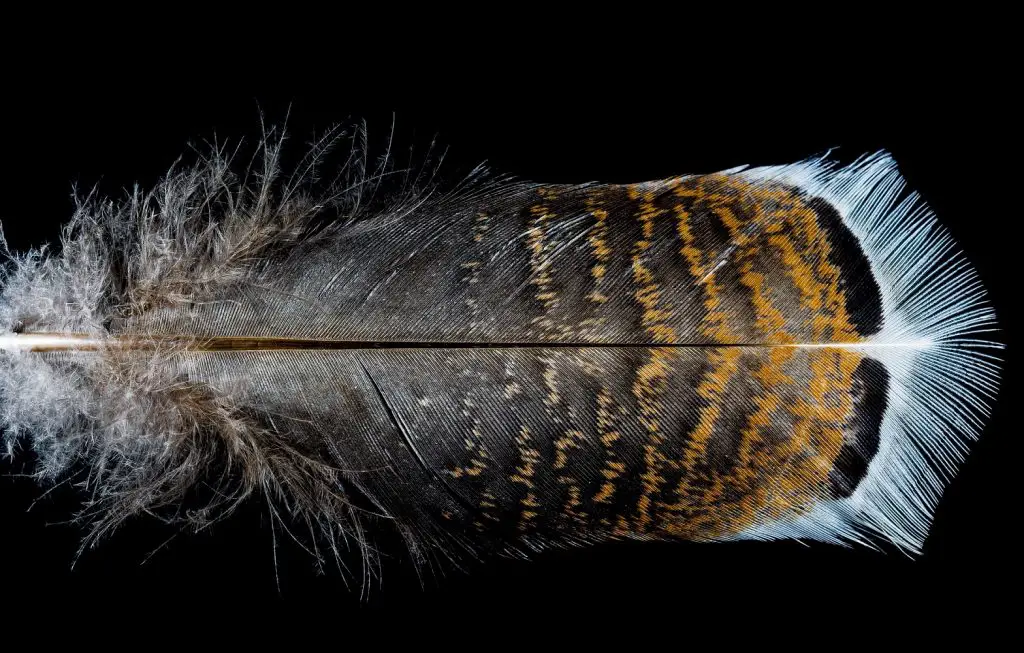
What Does a Turkey Feather Look Like?
A turkey feather may look different depending on where its found on the body. All birds have multiple feather types with minor color, shape, and texture variations. Does that sound confusing? Don’t worry! The wild turkey feather is typically relatively easy to spot because of its attractive look and feel. Let’s break down a few of the most common types of turkey feathers to help you understand them better:
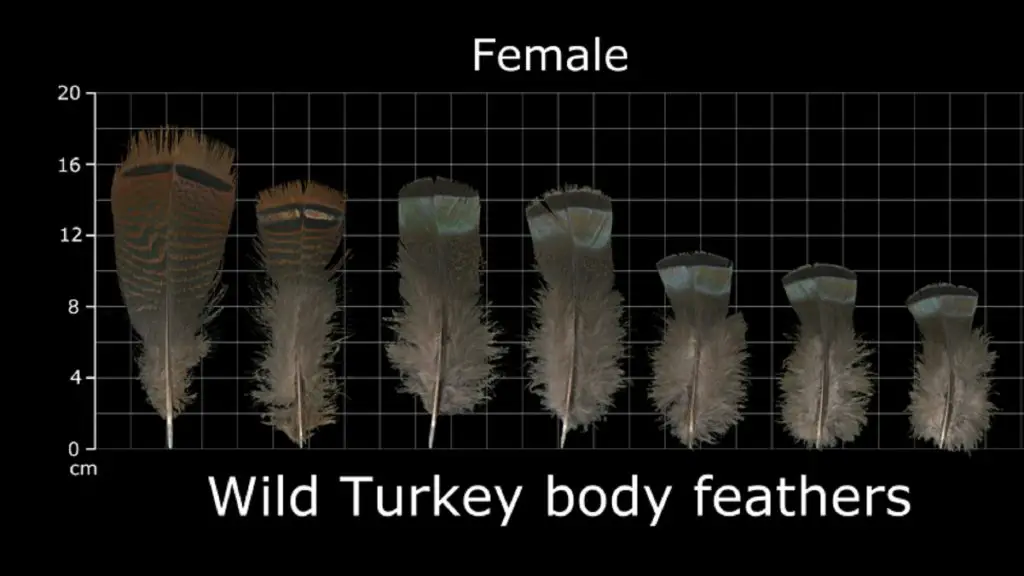
- Body Feathers: Turkey body feathers are typically those closest to their body, such as along their chest and legs. These feathers are usually shorter than wing feathers, with a broader end that narrows into a V-shape. They’re a bit duller than wing feathers and typically consist of varying stripes of brown and black, though some have gray along the tip. Some are fluffier along the edges for more insulation.
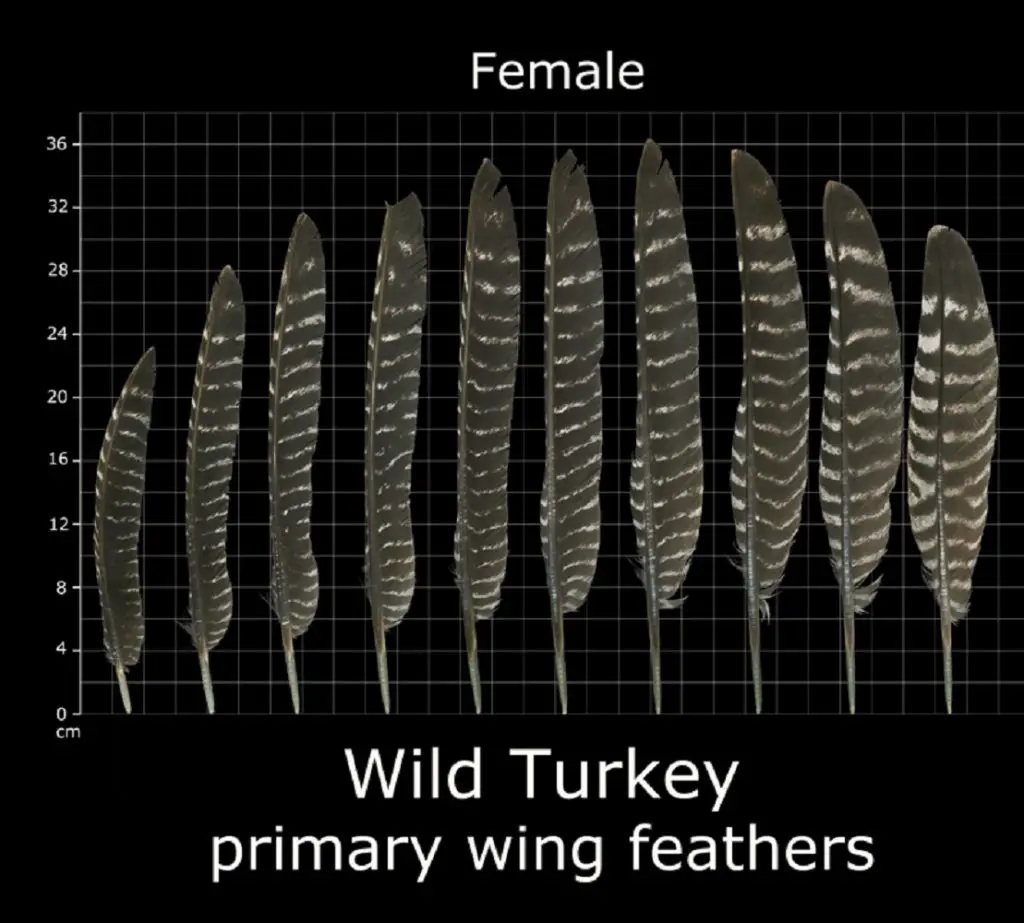
- Primary Wing Feathers: These feathers are among the longest and narrows of turkey feathers and often feature brighter and more attractive colors. They typically have a narrow tip that widens slightly but maintains an even length. Expect thick patches of black alternated with thinner white strips. In addition, the tip typically has a large stretch of black that gives the turkey a darker look.
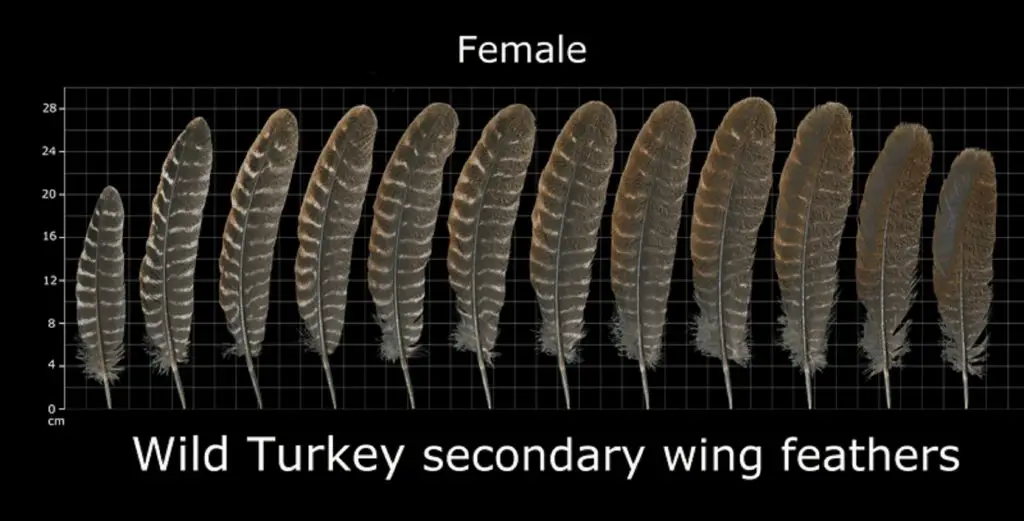
- Secondary Wing Feathers: Secondary wing feathers help make wings stronger and support the primary feathers’ function. They’re about the same overall size as primary feathers but a bit wider. They’re also shorter and have slightly different stripe patterns. The colors include large black patches alternating with white and even brownish-orange tones. These give the turkey its dense color design.
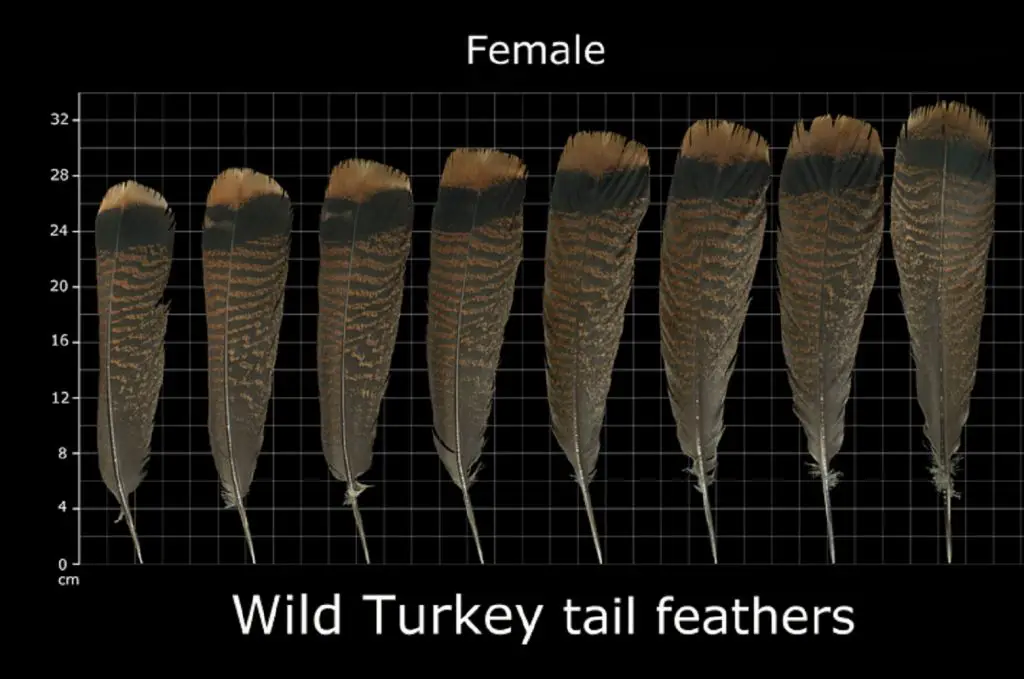
- Tail Feathers: Turkey tail feathers can be surprisingly long and broad because they help the turkey steer itself when it flies. Yes, the turkey can fly well over shorter distances. The tip is usually a little broader than secondary wing feathers and often has a brighter tip followed by a thicker black patch. Black and brownish-orange stripes alternate down the feather’s length.
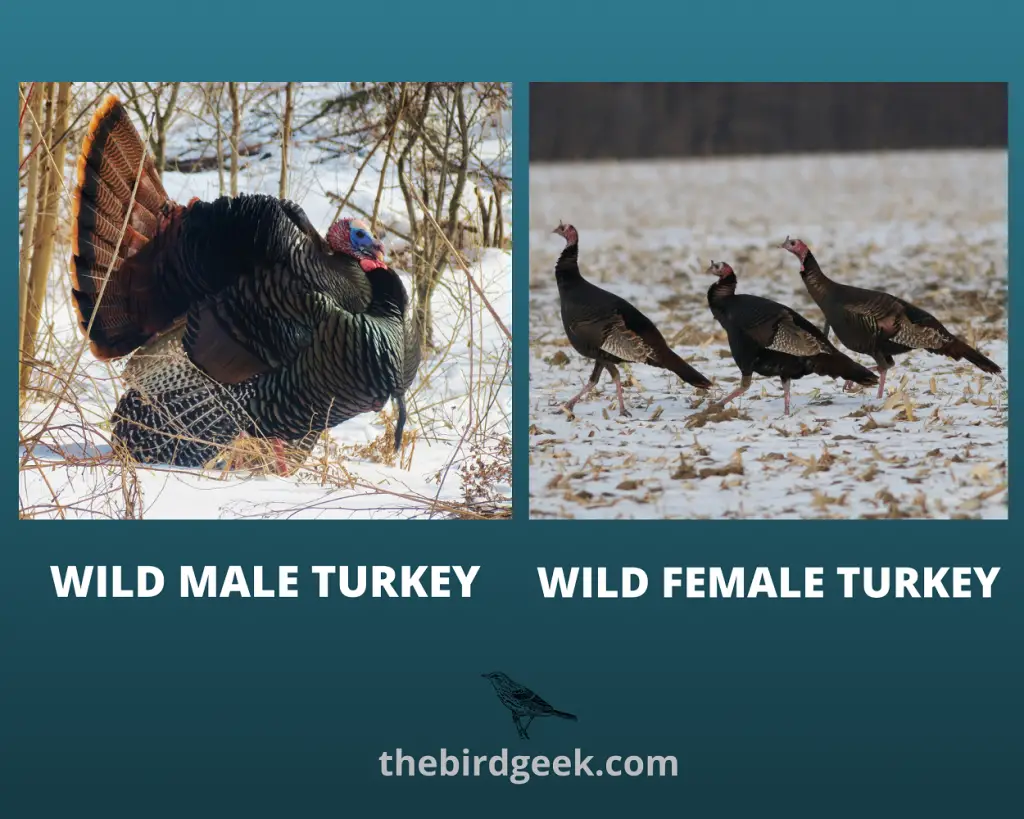
Note that male turkey feathers are typically brighter and more attractive than female feathers. Female feathers are duller to protect them from prey animals and to blend in more easily with their surroundings. Male feathers are gorgeous to attract mates and often feature sharper tones and more elaborate patterns on the wings, especially throughout the tips.
Related post: How to Identify Red Tailed Hawk Feathers
How Long are Turkey Feathers?
Like all birds, turkeys don’t have a singular feather length. That’s because they have multiple feather types that not only help them fly but provide a dense insulating layer that keeps them warm in the winter and cool in the summer. The average lengths typical of these four differing feather types are for female turkeys, as male turkeys have slightly shorter feathers:
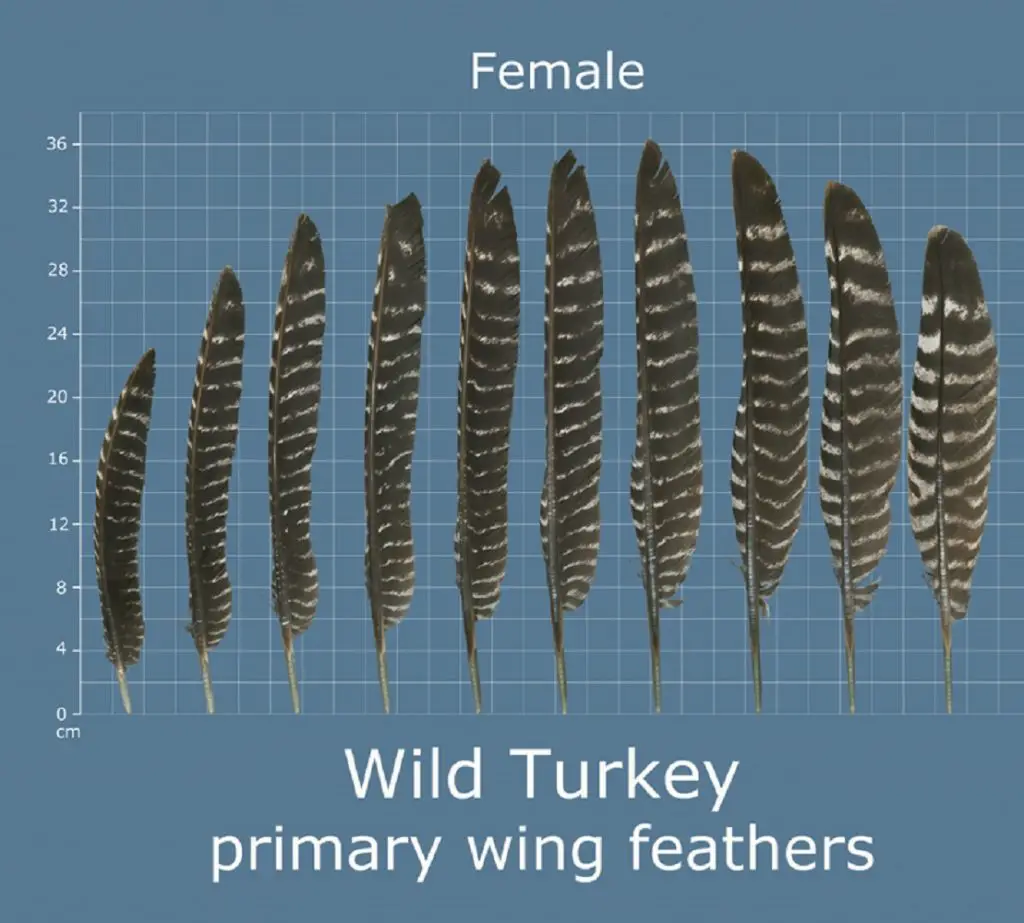
- Body Feathers: Body feathers are the shortest on a turkey to provide a denser layer of insulation. They range from just over 8 to 18 centimeters or 3-7 inches.
- Primary Wing Feathers: Primary wing feathers are the longest on a turkey’s body, ranging from just under 24 centimeters to over 36 centimeters. That is 9-14 inches on average.
- Secondary Wing Feathers: These feathers range between 20 and 28 centimeters, which is about 8-11 inches, with varying lengths between these averages.
- Tail Feathers: A turkey’s tail father can vary in length from just under 28 centimeters to over 32 centimeters. That is just over 11 inches to around 12.5 inches.
If the feather you found matches the description in the previous section and the length described here, you likely have a turkey feather! That’s great news for fans of this beautiful bird. However, knowing the difference between a turkey and a hawk feather is also essential. Hawk feathers are very common and can easily be confused with other types of birds: which can become a legal issue.
Related post: How To Identify Owl Feathers
What are the Differences Between a Turkey Feather Versus a Hawk Feather?
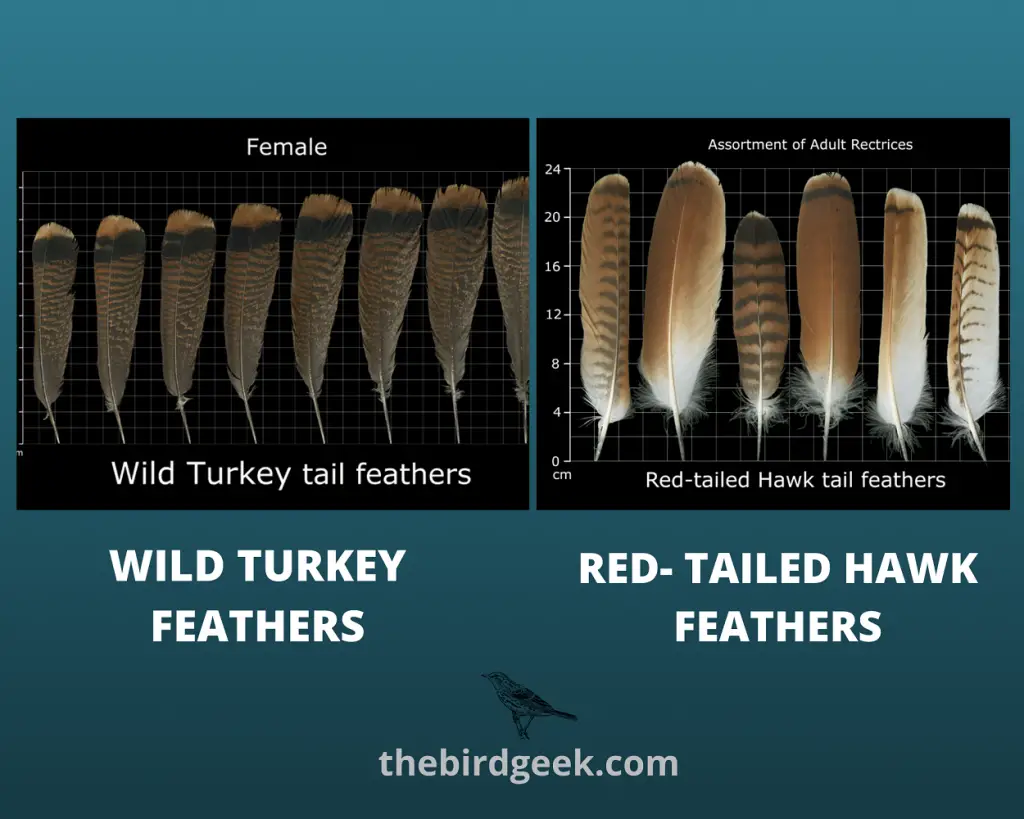
Note the size and shape differences between the feathers, as well as the color patterns. Images courtesy of fws.gov
Hawk feathers are typically shorter than turkey feathers by several inches with different colors. For example, many hawk feathers are gray and white. However, even brown hawk feathers have several differences, such as sharper edges along the sides of the feather, that make it easier to change position.
Hawk feathers also lack the distinctive color variations common on many turkeys. Though hawks are beautiful birds, they often have blander colors that help them blend into their surroundings to make capturing prey easier while hunting.
Knowing whether a feather you found is a turkey or hawk feather is essential! Taking a hawk feather is illegal and can get you in serious legal trouble. That’s because hawks are protected by various laws that make it illegal to collect feathers from birds of prey.
However, many other species are protected under different laws, even if they aren’t birds of prey. For example, do turkeys fall under this legal protection? Understanding the answer to this question will ensure you stay safe and avoid potential legal problems.
Related post: How To Identify Bald Eagle Feathers
Is it Illegal to Have a Turkey Feather?
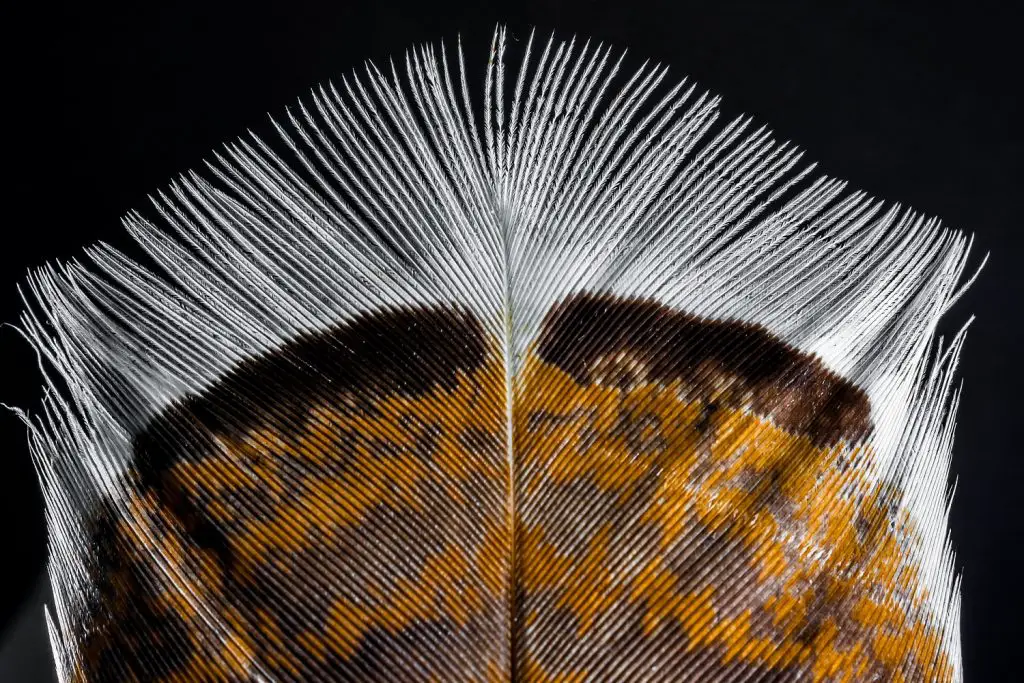
The Migratory Bird Treat Act makes collecting feathers and other items from many birds across the United States illegal. However, there are many exceptions to this rule. For example, Phasianidae birds are not protected under this treaty, and turkeys fall within this heading.
As a result, it is legal to collect turkey feathers, though often hard to do without help. For instance, many Native American feather repositories offer turkey feathers and can also sell feathers from otherwise protected birds, thanks to an exception for Native American tribes. Note: unless you are one-quarter Native American, you cannot obtain otherwise illegal feathers from these repositories.
Related post: Osprey Feathers Meaning
Why Do People Collect Turkey Feathers?
Turkey feathers are some of the few that are legal to collect, making them an excellent option for bird fans. They also look gorgeous and can be used in many decorations. For example, Native American crafters often use them in replica headdresses or elaborate visual ornaments. Due to their extensive and exciting spiritual meanings, people may also collect turkey feathers.
Turkey Feather Symbolism
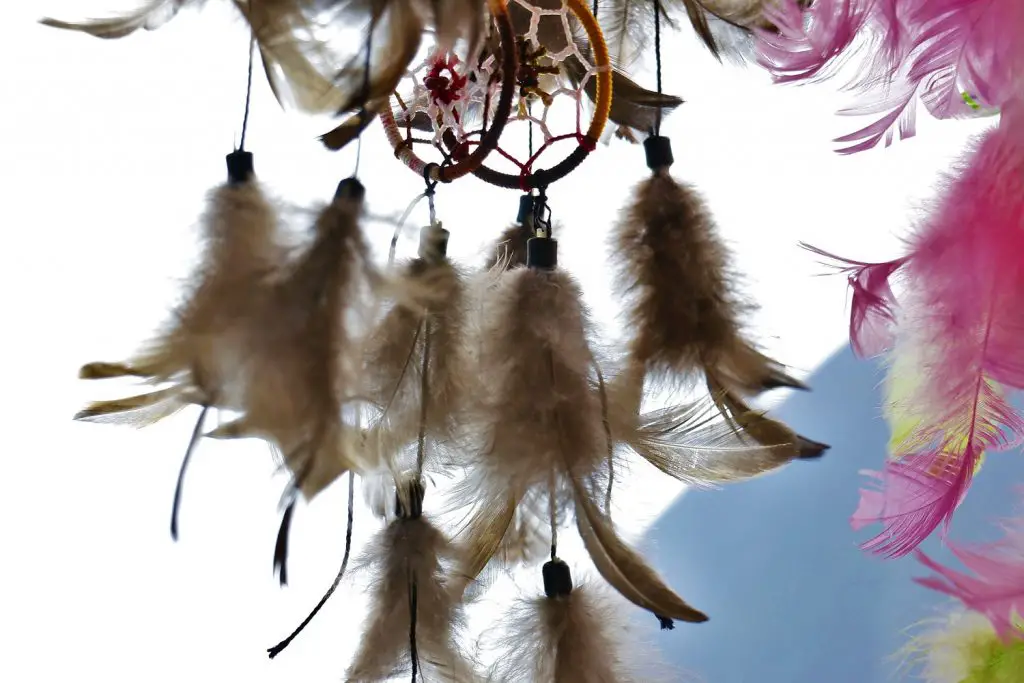
While turkeys have often been used as the butt of the joke in some western cultures (“You turkey!” was once a common insult), they are very well-respected in Native American cultures. Their deep symbolism is fascinating to explore and is well worth knowing. For example, turkey feathers often have meaningful symbolism across many cultures.
What Do Turkey Feathers Symbolize?
Turkeys symbolize many positive traits throughout many cultures. In addition, they are often considered a potent Earth symbol and a totem for honor. This connection comes due to their unique closeness to the ground. Unlike other birds, who spend most of their life in the air or in trees, turkeys are primarily ground-bound. That gives them a unique connection to the Earth.
Turkeys also symbolize pride, sacrifice, honor, blessings, freedom, flight, and uniqueness. These symbols are apparent when examining the turkey. Anybody who has seen a turkey family knows they are close-knit in a way other bird species are not. Their unique reliance on the Earth makes them an individualistic bird, as does their distinctive color and head shape.
Finding a turkey feather may communicate many of these messages based on your circumstances. For example, if you’re having a hard time making a decision and you find a turkey feather, the universe may be telling you to stay grounded and sensible. Make intelligent and careful decisions to avoid getting yourself in difficult situations.
What Do Turkey Feathers Mean to Native Americans?
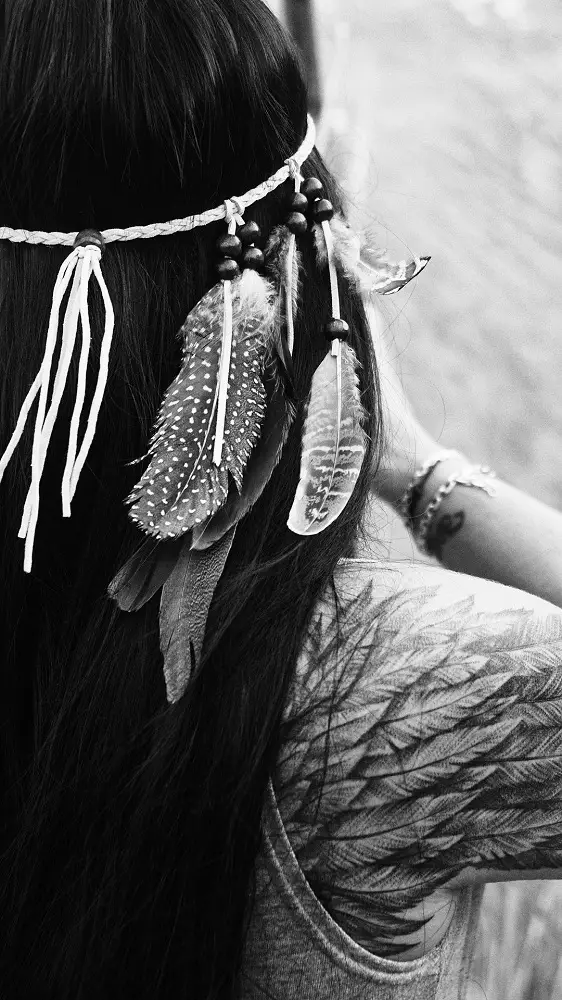
Most Native American tribes find feather feathers sacred and are particularly happy to find them on days other than Thanksgiving Day. However, long before this celebration, Native Americans considered the turkey a symbol of togetherness and thankfulness: that’s why they were served in the initial Thanksgiving Day celebration.
As a result, Native American tradition venerated the turkey and used its feathers in their decorative headdresses. Using these feathers symbolized balance and connection, a strong relationship with the Earth, and a better understanding of personal togetherness with your family.
Related post: How To Identify Osprey Feathers
What Does a Turkey Feather Tattoo Mean?
Feather tattoos have become very popular in recent years, mainly as Native American spirituality grows in popularity. They typically mean lightness, spiritual flight, fertility, and good luck. Adding other decorative touches can improve a tattoo and give it more meaning, such as adding extra feathers or other Native American totem symbols. Note that definitions may vary between tribes, so choose carefully.
Wrap Up- How to Identify Turkey Feathers
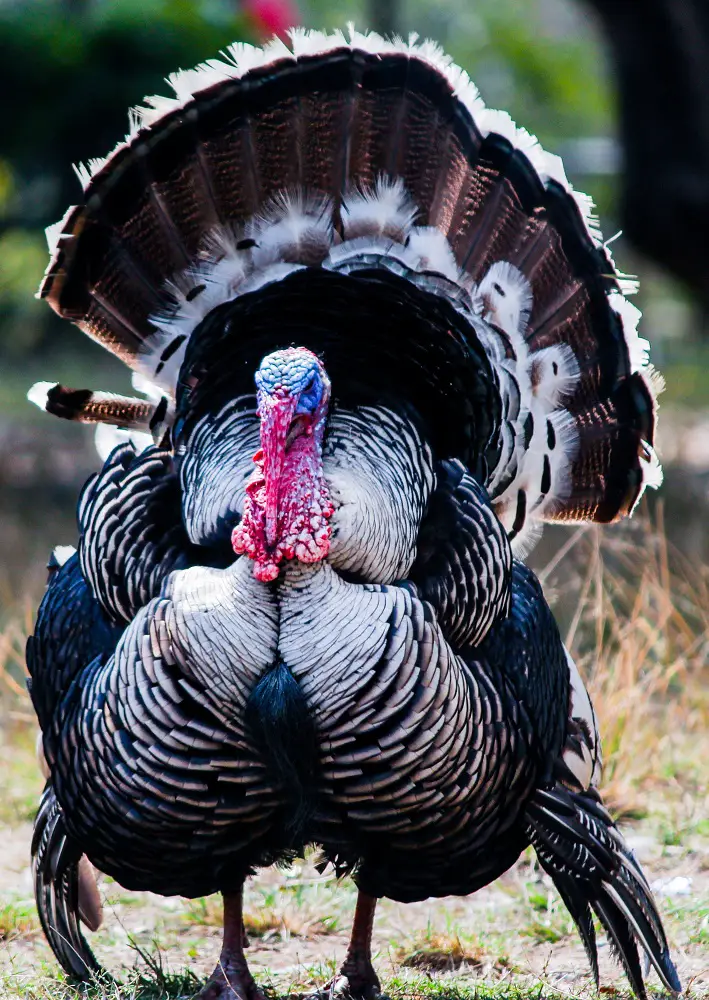
We hope this guide has helped you understand how to identify turkey feathers! And also understand their symbolic meaning and the legality of possessing them.
Related post: The Coolest Birds